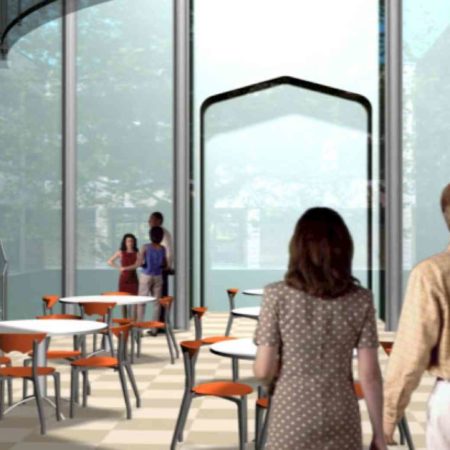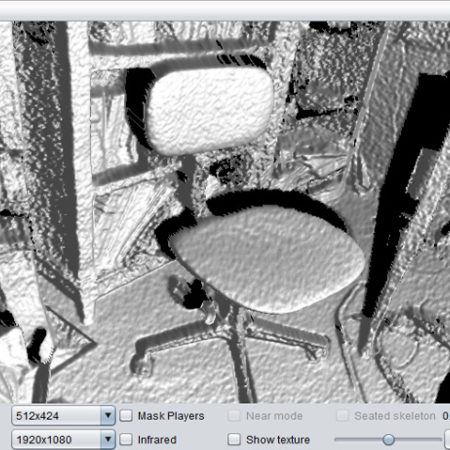Access Grid
The Access Grid (AG) is an ensemble of resources used to support human interaction across the Internet, consisting of multimedia displays, multipoint bi-directional audio, cameras, and shared spaces for presentations and interactions. The system is designed for group-to-group communication, enabling formal and informal group interactions. Locations include the Digital Worlds office, the Digital Worlds media lab, a portable node, and a conference room in the College of Fine Arts.
Description
DW Pioneers Access Grid for Cultural Projects
The Access Grid (AG) is an ensemble of resources used to support human interaction across the Internet. It consists of multimedia displays, multipoint bi-directional audio, cameras, and shared spaces for presentations and interactions. It supports large-scale distributed meetings, collaborative work sessions, seminars, lectures, tutorials and training. The system is designed for group-to-group communication (differentiating it from desktop to desktop based tools that focus on individual communication). Thus, the environment enables both formal and informal group interactions. Access Grid nodes are “designed spaces” that explicitly contain the high-end audio and visual technology needed to provide a high-quality compelling user experience. Currently, there are one hundred fully operational sites in the US (mostly Universities) and over twenty international sites.
The Digital Worlds Institute has constructed four AG nodes. Locations include the Digital Worlds office, the Digital Worlds media lab, a portable node, and a conference room in the College of Fine Arts. Possible public access locations may include Phillips Center for Performing Arts, The University Auditorium, and Constans Theatre. In addition, three other campus groups have constructed their own nodes. Digital Worlds was the first group on campus to have a node operational. It is our charter to elevate the design and functionality to a new level not seen with any of the current nodes installed worldwide.
Digital Worlds has used the AccessGrid for many distributed collaboration meetings and art performances such as Dancing Beyond Boundaries, Mask, Original Seed, Non Divisi, and Navigating Gravity.
The Media Monolith is a hybrid multimedia system for use both as an Access Grid node and as a system for multimedia presentations. The system is located in FAA 102. Two Pioneer 50″ plasma screens are stacked vertically to fit a wall limited in width. Video cameras for the AG node are hidden in the structure next to the screens. Wireless microphones complement the Media Monolith for capturing room audio.
The College of Fine Arts conference room in FAA 109 also features an AccessGrid node. The display for this room is comprised of three Fujitsu 42″ plasma screens tiled horizontally. Two computer controllable Sony video cameras capture people seated at the conference table and there is a stationary camera in the rear of the room. Tabletop or lapel microphones capture the voices of individual speakers.
The Digital Worlds media lab in CSE 413 contains a three-screen rear video projection Access Grid node. Each screen is eight feet wide by six feet in height. The two side screens can be positioned at multiple angles to the center screen at angle settings of 90, 120, and 180 degrees. The node has one video camera attached to the center screen and another video camera in the rear. Two handheld and two lapel wireless microphones are included. Audio speakers are mounted above the screens. This setup also functions as the SAGE.
A portable Access Grid node is available. The rolling unit is configured with one video camera and four wireless microphones (two handheld and two lapel). Amplified audio speakers and at least one video projector must be supplied to use this system. At least one (three is best) duplex multicast 100 Mb network port must be available for the three computers. Three static IP addresses with DNS entries are required to configure the node.






